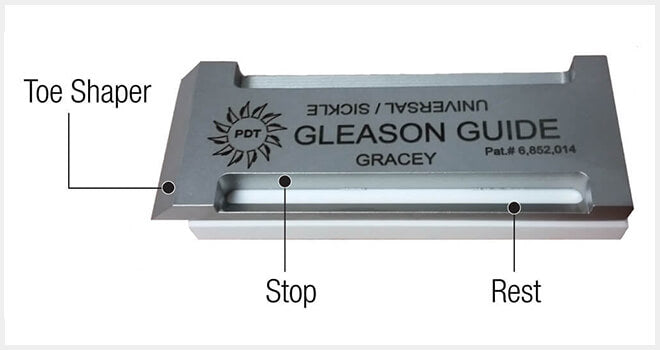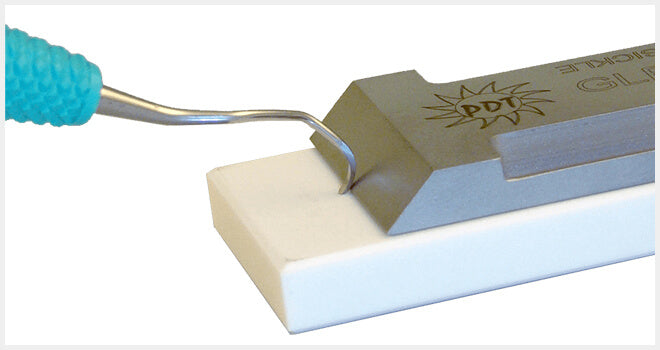Take the guesswork out of sharpening for more accurate results in less time, every time.
Let’s face it — sharpening dental instruments isn’t the best part of anyone’s day. Maintaining that perfect edge while thinking about the clock is a struggle that every dental professional is familiar with. That’s why PDT is proud to bring you the patented Gleason Guide™ Sharpening System!
See How It Works With PDT CEO and Founder Linda Miller
By following a simple 3 step process, you can maintain your edge easily and quickly:
- Stop. Place the back of your instrument’s blade against the stop.
- Rest. Lower the instrument until the terminal shank is resting against the bar.
- Glide. Move your instrument in a gliding motion across the stone using light pressure.
Using the Gleason Guide to maintain your dental scalers, curettes, and Graceys is just that easy! By keeping your dental instruments at their best, you can reduce chair time and improve comfort for patients. Plus, a sharp instrument reduces the amount of pressure you need to apply when removing deposits, gives you more control over the instrument by reducing slipping, and improves your ability to detect calculus.


Why is sharpening important?
- Reduce the number of strokes necessary to remove calculus, leading to a more comfortable visit for your patients and greater efficiency.
- Lessen the amount of pressure needed to effectively remove calculus, reducing the risk of developing musculoskeletal disorders.
- Avoid burnishing calculus for more effective patient treatment.



